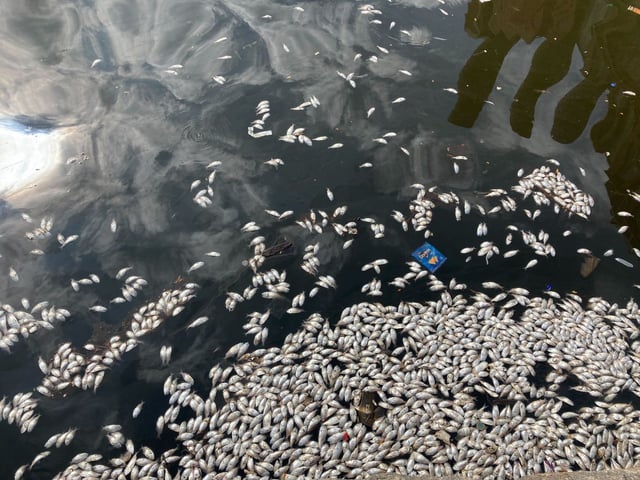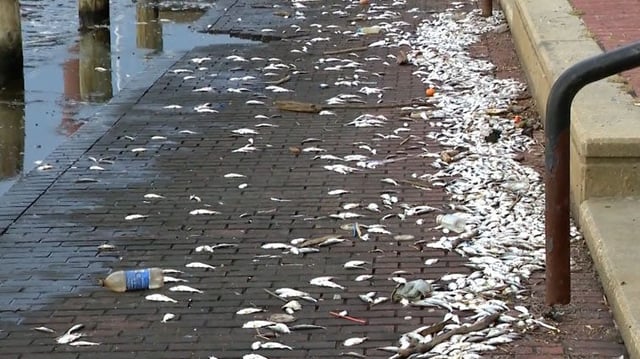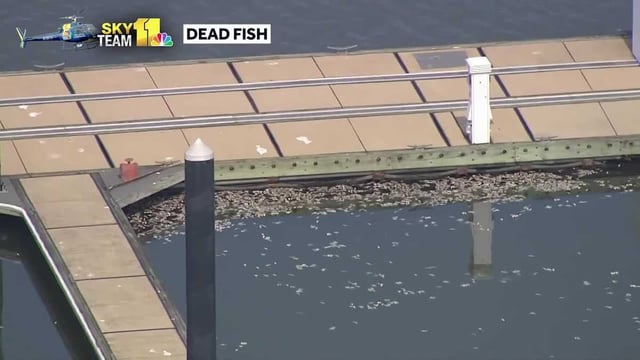Overview
- Maryland environmental inspectors estimated about 25,000 dead Atlantic menhaden and measured low dissolved oxygen from Canton to Locust Point during a Monday survey.
- MDE says the conditions align with a seasonal algae die-off and water-column turnover and reports no evidence of a specific pollution event.
- This is the harbor’s third major fish kill in recent weeks, following events on Aug. 22 (about 61,000 fish) and Aug. 28 (at least 120,000).
- Residents and visitors reported a strong rotten-egg smell, while removal is mostly handled by wind, tides and the city’s routine debris collection.
- Experts from Blue Water Baltimore and the National Aquarium say longstanding nutrient pollution drives algal blooms and low-oxygen zones that intensify these seasonal die-offs.



